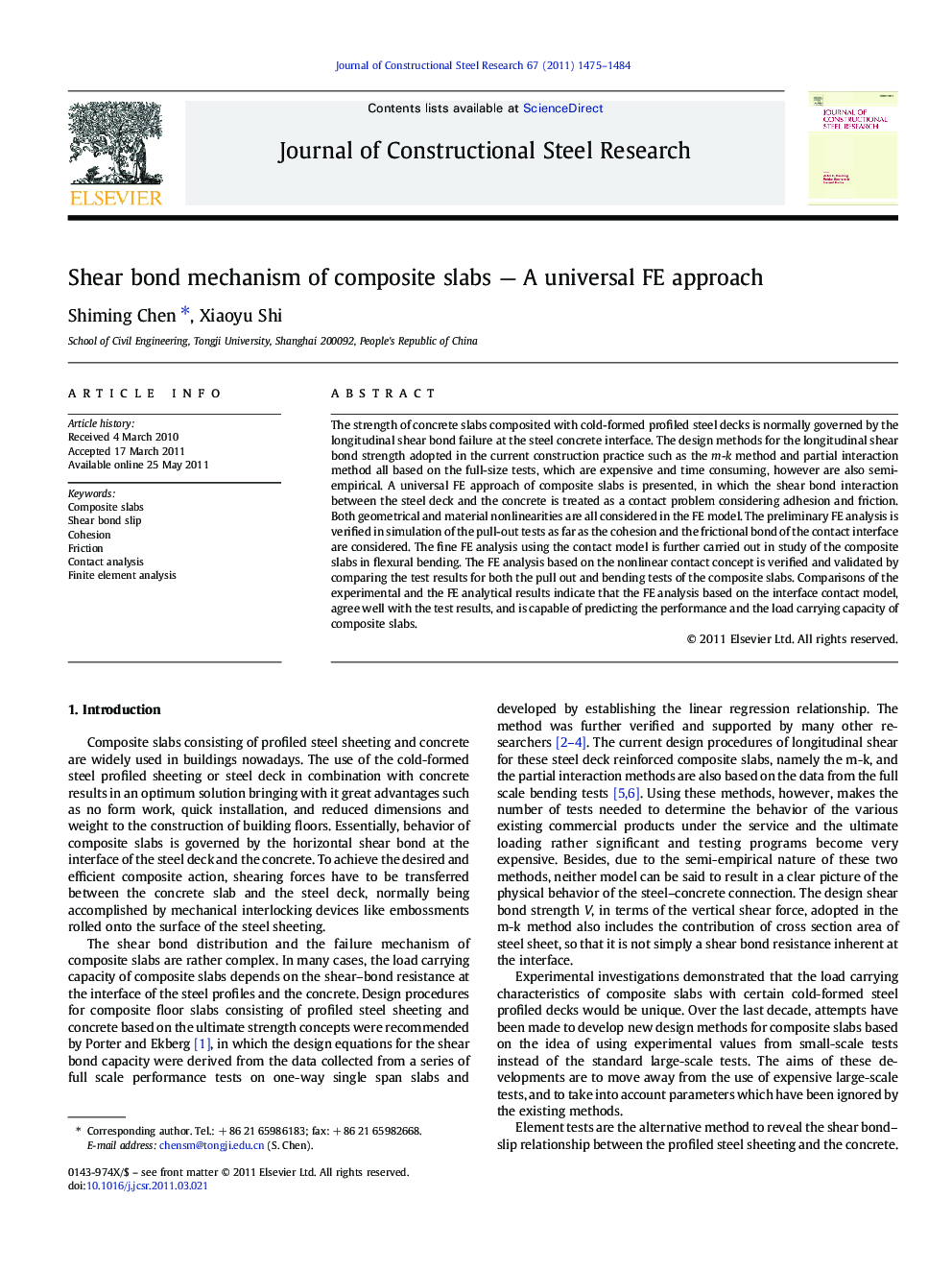| کد مقاله | کد نشریه | سال انتشار | مقاله انگلیسی | نسخه تمام متن |
|---|---|---|---|---|
| 285460 | 509198 | 2011 | 10 صفحه PDF | دانلود رایگان |

The strength of concrete slabs composited with cold-formed profiled steel decks is normally governed by the longitudinal shear bond failure at the steel concrete interface. The design methods for the longitudinal shear bond strength adopted in the current construction practice such as the m-k method and partial interaction method all based on the full-size tests, which are expensive and time consuming, however are also semi-empirical. A universal FE approach of composite slabs is presented, in which the shear bond interaction between the steel deck and the concrete is treated as a contact problem considering adhesion and friction. Both geometrical and material nonlinearities are all considered in the FE model. The preliminary FE analysis is verified in simulation of the pull-out tests as far as the cohesion and the frictional bond of the contact interface are considered. The fine FE analysis using the contact model is further carried out in study of the composite slabs in flexural bending. The FE analysis based on the nonlinear contact concept is verified and validated by comparing the test results for both the pull out and bending tests of the composite slabs. Comparisons of the experimental and the FE analytical results indicate that the FE analysis based on the interface contact model, agree well with the test results, and is capable of predicting the performance and the load carrying capacity of composite slabs.
Research highlights
► A FE analysis approach studying behavior and failure mechanism of composite slabs is presented.
► The FE analysis based on the nonlinear contact concept is verified against test results.
► All the composite slabs were found fail in the longitudinal shear bond.
► Major part of the shear bond existed in the shear span region.
► The maximum capable longitudinal shear force is influenced inversely by shear span length.
Journal: Journal of Constructional Steel Research - Volume 67, Issue 10, October 2011, Pages 1475–1484